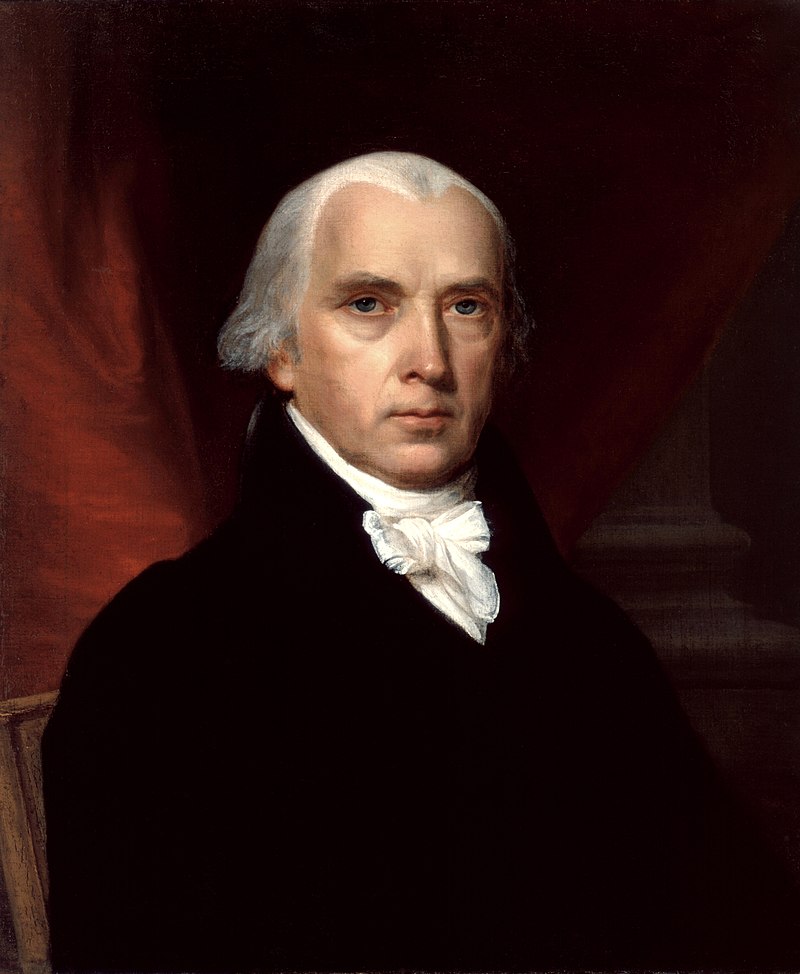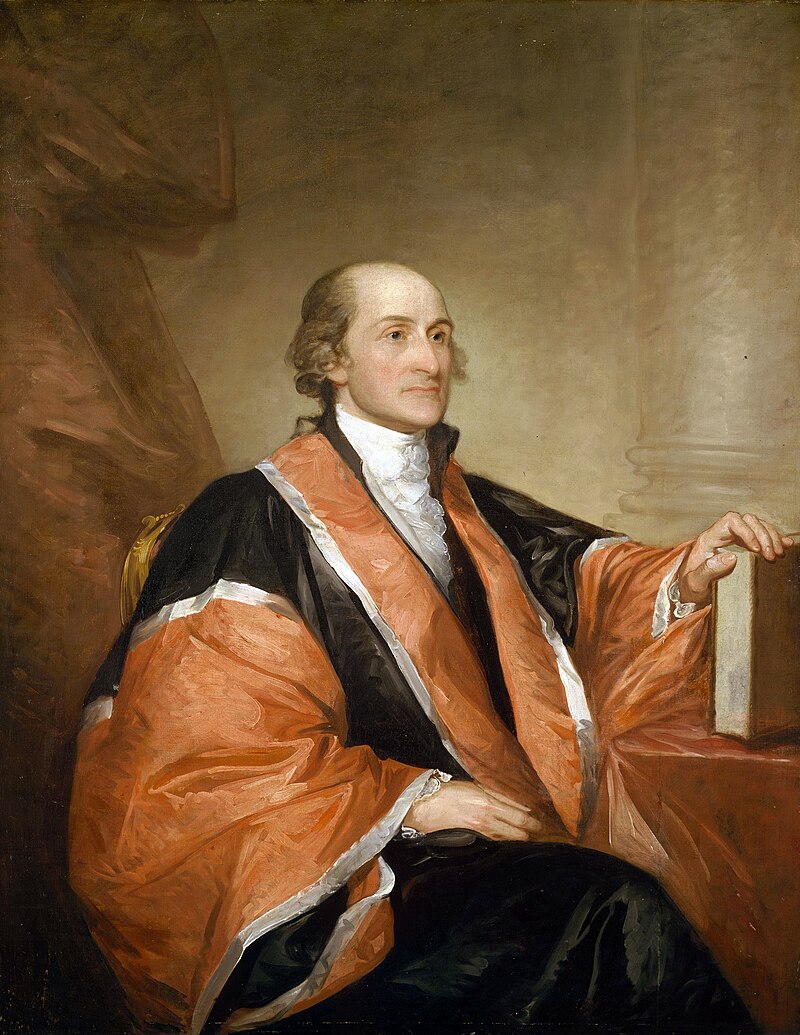Key Founding Figures – Part III
In this last part of series about America’s Key Founding Figures, we will highlight Alexander Hamilton, James Madison, and John Jay—drafters of The Federalist Papers, published between 1787 and 1788 in several New York newspapers persuading voters to ratify the proposed U.S. Constitution. The Papers consisted of 85 essays with Hamilton credited with 52, Madison with 28, and Jay with five.
 A lawyer and political scientist, Alexander Hamilton, while a student at King’s College, joined the anti-British movement in 1774. He made an impression with public speeches and the writing of two pamphlets containing his revolutionary essays. In 1776, Hamilton organized a volunteer artillery company which led to his assignment as captain of an artillery in the Continental Army. Hamilton’s abilities were noticed by George Washington, and he joined Washington’s staff in 1777 serving four years as Washington’s private secretary. As a New York state legislature, he was chosen as a delegate to the Federal Convention of 1787. Although Hamilton did not agree with much of the content of the proposed Constitution, he was one of three New York delegates to sign it and made substantial contribution to its ratification. Hamilton’s significant role in the writing of the The Federalist Papers played a huge part in convincing New Yorkers to vote in favor of the Constitution. In 1789, Hamiliton was apppointed Secretary of the Treasury and was the primary author of the economic policies of George Washington’s administration.
A lawyer and political scientist, Alexander Hamilton, while a student at King’s College, joined the anti-British movement in 1774. He made an impression with public speeches and the writing of two pamphlets containing his revolutionary essays. In 1776, Hamilton organized a volunteer artillery company which led to his assignment as captain of an artillery in the Continental Army. Hamilton’s abilities were noticed by George Washington, and he joined Washington’s staff in 1777 serving four years as Washington’s private secretary. As a New York state legislature, he was chosen as a delegate to the Federal Convention of 1787. Although Hamilton did not agree with much of the content of the proposed Constitution, he was one of three New York delegates to sign it and made substantial contribution to its ratification. Hamilton’s significant role in the writing of the The Federalist Papers played a huge part in convincing New Yorkers to vote in favor of the Constitution. In 1789, Hamiliton was apppointed Secretary of the Treasury and was the primary author of the economic policies of George Washington’s administration.
 James Madison, an American statesman and political theorist, took great interest in the relationship between the American colonies and Britain. In 1774, Madison took a seat on the local Committee of Safety in Virginia, a patriot pro-revolution group that oversaw the local militia, and joined the Virginia militia in 1775. Madison served in Virginia’s state legislature writing the state constitution and making special contributions to the wording of religious freedoms. In 1780, he represented Virginia as a delegate to the Continental Congress. In 1787, Madison represented Virginia at the Constitution Convention. It was Madison’s idea to form a federal government consisting of executive, legislative, and judicial branches, and to have a system of checks and balances. He was also credited with the idea of “shared sovereignty” between state and federal government. His contributions to the Constitution and The Federalist Papers were major in Madison later being dubbed as “Father of the Constitution.” In 1809 Madison became the 4th American president.
James Madison, an American statesman and political theorist, took great interest in the relationship between the American colonies and Britain. In 1774, Madison took a seat on the local Committee of Safety in Virginia, a patriot pro-revolution group that oversaw the local militia, and joined the Virginia militia in 1775. Madison served in Virginia’s state legislature writing the state constitution and making special contributions to the wording of religious freedoms. In 1780, he represented Virginia as a delegate to the Continental Congress. In 1787, Madison represented Virginia at the Constitution Convention. It was Madison’s idea to form a federal government consisting of executive, legislative, and judicial branches, and to have a system of checks and balances. He was also credited with the idea of “shared sovereignty” between state and federal government. His contributions to the Constitution and The Federalist Papers were major in Madison later being dubbed as “Father of the Constitution.” In 1809 Madison became the 4th American president.
 Biographer Walter Stahr sites John Jay, a successful New York lawyer, as “a vital figure in the founding of our republic,” who devoted himself to the American Revolution. He represented New York at the First Continental Congress in September, 1774. He wanted to keep ties with Britain, but ensuring the rights of the colonists became more important. In October, 1774, Jay’s draft of The Address to the People of Great Britain was adopted by Congress. As New York’s chief justice in 1776, Jay helped write the state constitution. He returned to the Continental Congress in 1778, becoming its president, then took on his most prominent role—diplomat. As Minister to Spain, Jay convinced Spain to loan the U.S. $170,000. He then joined Benjamin Franklin in Paris, France, negotiating an end to the Revolutionary War with the Treaty of Paris (1783). Besides his contribution to The Federalist Papers, Jay authored a pamphlet, “An Address to the People of New York,” which helped ratify the Constitution. He would become the 1st Chief Justice of the supreme Court in 1789.
Biographer Walter Stahr sites John Jay, a successful New York lawyer, as “a vital figure in the founding of our republic,” who devoted himself to the American Revolution. He represented New York at the First Continental Congress in September, 1774. He wanted to keep ties with Britain, but ensuring the rights of the colonists became more important. In October, 1774, Jay’s draft of The Address to the People of Great Britain was adopted by Congress. As New York’s chief justice in 1776, Jay helped write the state constitution. He returned to the Continental Congress in 1778, becoming its president, then took on his most prominent role—diplomat. As Minister to Spain, Jay convinced Spain to loan the U.S. $170,000. He then joined Benjamin Franklin in Paris, France, negotiating an end to the Revolutionary War with the Treaty of Paris (1783). Besides his contribution to The Federalist Papers, Jay authored a pamphlet, “An Address to the People of New York,” which helped ratify the Constitution. He would become the 1st Chief Justice of the supreme Court in 1789.
Seven key figures among the Founding Fathers made significant contributions that would affect the lives of the millions who came after them.




